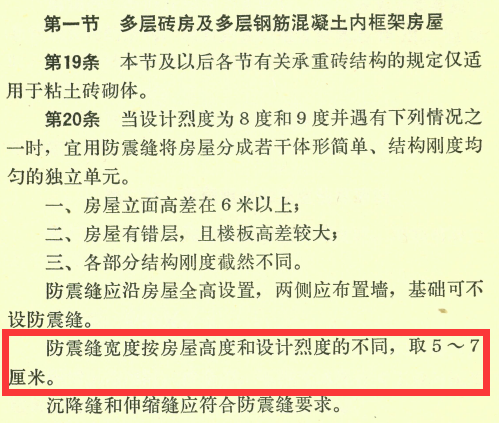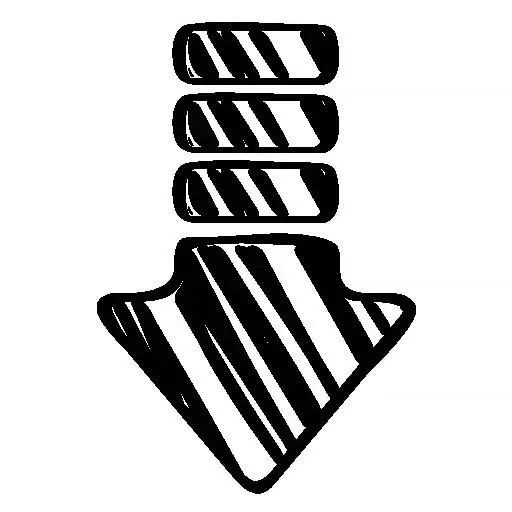Code for Seismic Design of Buildings GB50011-2015.
Therefore, it is necessary to sort out the requirements for the width of seismic joint in each period.
In view of this, it is recommended to follow the following principles for the control of seismic joints of existing buildings: 1.
Chen talked about the room inspection.

Other Class A, B and C buildings: according to the original design standards.
3、 Other problems that need to be explained are stipulated in Paragraph 2 of Article 5.4.2 of the General Rules: for dense buildings, including buildings on both sides of the seismic joint, the seismic evaluation requirements of relevant parts should be strictly adjusted.
Class A buildings (designed according to the 74 and 78 versions of the anti seismic code): according to the original design standards; 3.
There is no provision for concrete structures whose inspection results are structural layout rules according to Article 6.2.1 of the standard, Irregular concrete structures are required to comply with the requirements of the current national design code, so the requirements for regular concrete structures are relaxed and the requirements for irregular concrete structures are improved.
What do you think? Welcome to leave a message and discuss in the comment area! It is recommended to read that the building structure is “fined” 1.2 million yuan for exceeding the quota design index! Design before signing a contract.
Based on the provisions of the above versions of the seismic design code on seismic joints, with the updating of the version, The requirements for seismic joints of various structural systems are gradually widened.
Fortunately, we can recover 2.83 million yuan of design fees.
Code for Seismic Design of Buildings GB50011-2010 and GB50011-2010 (2016 version).
However, in Class B buildings, the provisions for masonry structures are consistent with the anti seismic regulations in the 89th edition, while the provisions for concrete structures are different.
2、 Provisions on Seismic Evaluation Standard The current national standard, Standard for Seismic Evaluation of Buildings (GB50023-2009), requires that Class A buildings have no seismic joints.
Code for Seismic Design of Buildings GBJ11-894.
Article 6.3.2 of the seismic evaluation standard also stipulates that, however, no explanation has been given on how to improve the evaluation requirements in the specific articles and article descriptions.
Class A buildings (designed according to the 89 version of the code): masonry structures are subject to the 89 version of the code, regular buildings of concrete structures are subject to the 89 version of the code, and irregular buildings are subject to the 16 version of the code; 4.
For example, the seismic joint width of masonry structures is required to be 50~70mm in the 74 version of the Anti seismic Code, and 70~100mm in the 16 version of the Anti seismic Code; The seismic joint width of the frame structure below 15m is 50mm according to the requirements of the 74 version of the anti seismic code, and 100mm according to the requirements of the 16 version of the anti seismic code.
This is one of the issues that should be considered in the next revision of the specification.
Class A buildings (without seismic fortification): according to the seismic evaluation standards; 2.
The requirements for quakeproof joints of Class B buildings are as follows: from the above, it can be seen that there is no requirement for the width of quakeproof joints in the current seismic evaluation standard for Class A buildings, which is somewhat relaxed compared with the anti seismic regulations in the 74th and 78th editions.
Code for Seismic Design of Industrial and Civil Buildings TJ11-783.
For the seismic evaluation of existing buildings, we often need to evaluate the width of seismic joints.
(Click here to view) In actual projects, when the plane or elevation shape of the house is complex or the structural stiffness is completely different, seismic joints are generally set.
Building structure · character | Luo Chiyu, Guangdong Provincial Academy: build from the heart, and build the future building structure | 393.9 meters high! Round Sky and Place – Shenzhen Evergrande Center is designed to create a new landmark building structure in Shenzhen? Detailed explanation of design and construction examples! Important Notice [Registration Opening] November 24-26 Hangzhou: The 8th International Conference on Seismic Technology of Building Structures [Heavy Opening] “The Second Outstanding Youth in the Building Structure Industry” Selection Activity [Invitation for Editorial Participation] Three technical regulations of CECS are invited to participate in online education“.



1、 The provisions of various versions of the design standard Code for Seismic Design of Industrial and Civil Buildings TJ11-742.

Source: Mr.

However, the General Regulations did not make corresponding provisions on how to strictly adjust.



